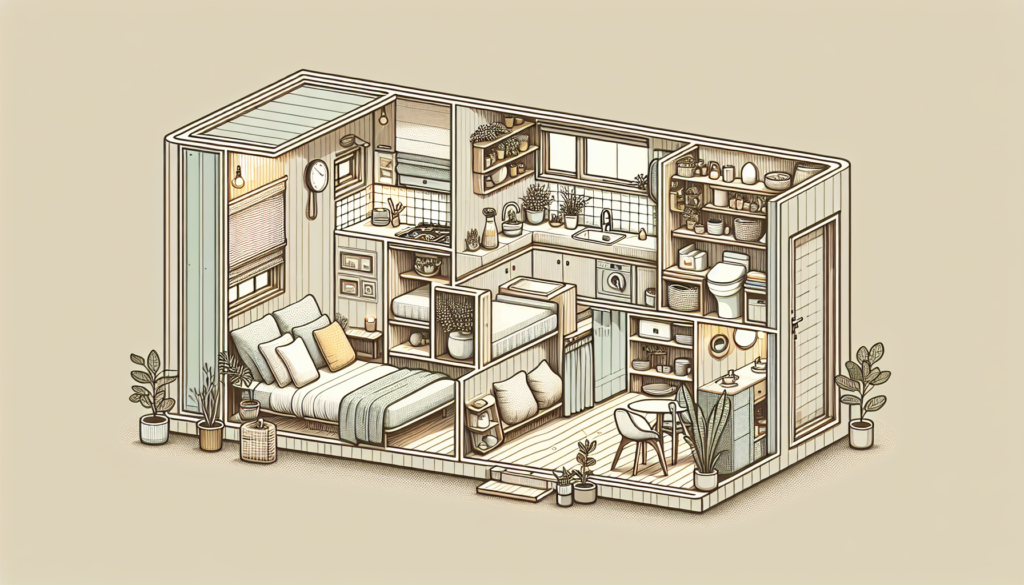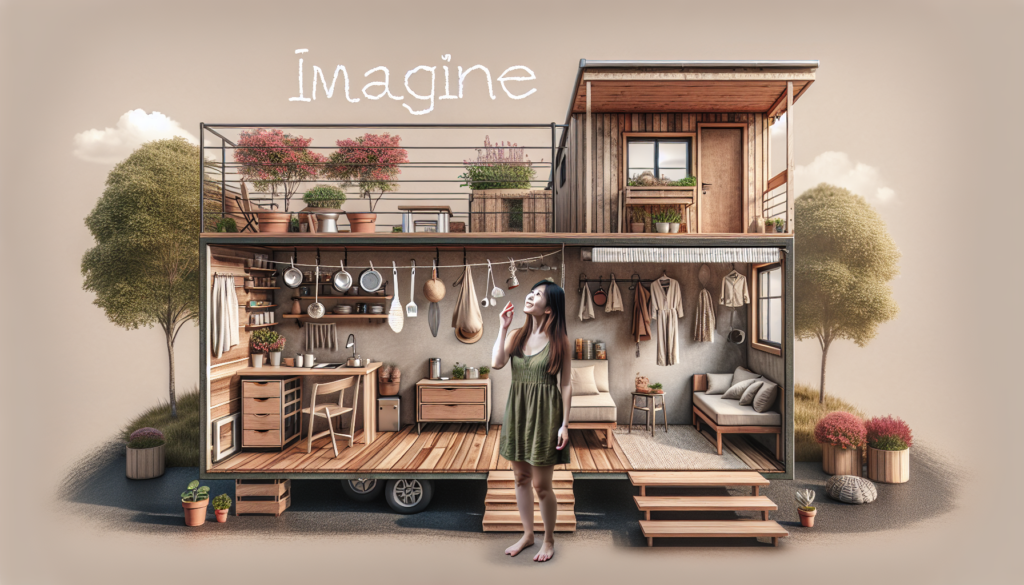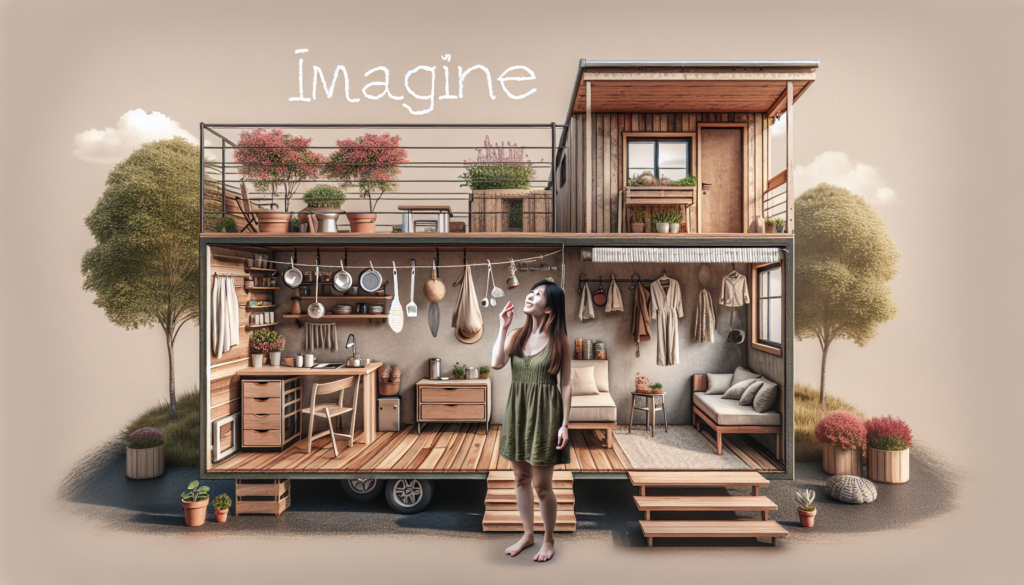Moving into a tiny home can be an exciting and transformative experience for families looking to simplify their lives and live more sustainably. However, the process of downsizing can also be overwhelming and challenging. In this article, you will discover a variety of helpful tips and tricks to make the transition to a smaller living space smoother and more enjoyable for the whole family. From creative storage solutions to designing multifunctional spaces, this guide will provide valuable insights to ensure that your journey towards living in a tiny home is a successful and positive one.

Advantages of Downsizing to a Tiny Home
Reduced Living Expenses
One of the major advantages of downsizing to a tiny home is the significant reduction in living expenses. With smaller square footage comes lower costs in terms of mortgage or rent payments, property taxes, and utility bills. Additionally, the maintenance and upkeep costs of a tiny home are significantly lower compared to traditional larger homes. By downsizing, you can free up a substantial amount of money and allocate it towards other important aspects of your life such as savings, travel, or pursuing your passions.
Simplified Lifestyle
Downsizing to a tiny home can also lead to a simplified and more intentional lifestyle. With limited space, you are forced to prioritize your belongings and only keep what truly adds value to your life. This process of decluttering and embracing minimalism can be incredibly liberating and provide a sense of clarity. A simpler lifestyle also means less time spent on cleaning and maintenance, allowing you to focus on the things that truly matter to you, such as spending quality time with loved ones, pursuing hobbies, or engaging in community activities.
Environmental Benefits
Choosing to downsize to a tiny home also comes with significant environmental benefits. Tiny homes tend to have a smaller carbon footprint compared to larger traditional homes. They require less energy for heating and cooling, less water usage, and often utilize sustainable building materials. Additionally, downsizing can lead to a reduced consumption of resources, as you become more conscious of your purchasing habits and overall ecological impact. By embracing a minimalist and eco-friendly lifestyle, you contribute to the preservation of the environment for future generations.
Considerations Before Downsizing
Assessing Space Needs
Before downsizing to a tiny home, it is crucial to assess your space needs realistically. Consider the number of people who will be living in the home, their individual needs, and any potential future changes in your family dynamics. While tiny homes offer a cozy living environment, it is important to ensure that there is enough space to accommodate everyone comfortably. Take into account the storage requirements, living areas, and any specific needs such as home offices or play areas for children.
Budgeting for the Move
Downsizing to a tiny home involves financial considerations beyond the purchase or construction of the home itself. It is essential to create a budget that covers not only the cost of the tiny home but also any additional expenses such as land rental or purchase, permits, hooking up utilities, and any necessary renovations or customizations. Additionally, factor in ongoing costs such as maintenance and potential upgrades in the future. Having a clear budget in place will help you make informed decisions and ensure a smooth transition to tiny living.
Selecting the Right Tiny Home
Choosing the right tiny home is crucial for a successful downsizing experience. There are various types of tiny homes available, including tiny houses on wheels, modular homes, and backyard cottages. Consider your specific needs, preferred location, and long-term plans when selecting the type of tiny home that suits you best. Research various builders or manufacturers, visit open houses or model homes, and take the time to understand the different layouts and design options available. It is important to find a tiny home that not only meets your spatial needs but also aligns with your aesthetic preferences and desired level of sustainability.
Optimizing Storage in a Tiny Home
Maximizing Vertical Space
In a tiny home, maximizing vertical space is crucial to make the most out of the limited square footage. Take advantage of high ceilings by incorporating tall bookshelves, cabinets, or wall-mounted storage units. Utilize the space above doorways or windows for additional shelving or storage options. Installing hooks or hanging organizers on walls can provide a practical solution for hanging clothes, accessories, or kitchen utensils. By effectively utilizing vertical space, you can create an illusion of spaciousness and keep your belongings organized and easily accessible.
Investing in Multifunctional Furniture
Multifunctional furniture is a game-changer when it comes to efficient storage solutions in a tiny home. Look for furniture pieces that serve multiple purposes, such as sofa beds, coffee tables with built-in storage, or dining tables that can be folded away when not in use. Consider investing in a bed frame with integrated drawers or under-bed storage compartments. Opt for ottomans or benches that can double as seating and provide hidden storage space. By choosing multifunctional furniture, you can optimize your living areas and minimize clutter.
Utilizing Creative Storage Solutions
In addition to maximizing vertical space and investing in multifunctional furniture, creative storage solutions can further enhance the organization and functionality of your tiny home. Utilize every nook and cranny, including empty space under stairs, in-between wall studs, or in corners. Install magnetic strips on walls or inside cabinets for storing knives or other metal kitchen utensils. Use hanging shoe organizers on the back of doors for storing small items or accessories. Consider utilizing overhead storage racks in the kitchen or bathroom for additional space. By thinking outside the box and utilizing every available space, you can optimize your storage capabilities and maintain a clutter-free tiny home.
Streamlining Belongings
Decluttering and Minimalism
Downsizing to a tiny home necessitates a thorough decluttering process and embracing a minimalist mindset. Take the time to go through every item you own and ask yourself if it truly adds value to your life. Be ruthless in letting go of items that are no longer useful or meaningful. Consider donating, selling, or storing excess possessions that you cannot part with but do not need on a daily basis. Embracing minimalism allows you to focus on the things that truly matter to you and prevents your tiny home from becoming overwhelmed with unnecessary belongings.
Prioritizing Essential Items
When streamlining your belongings for a tiny home, prioritize essential items that are necessary for your day-to-day life. Focus on items that serve multiple purposes or have sentimental value. Consider the functionality, durability, and practicality of each item before deciding to keep it. It is important to strike a balance between maintaining a comfortable living environment and not overcrowding your tiny home with unnecessary possessions. By prioritizing essential items, you can ensure that your tiny home remains functional and clutter-free.
Donating, Selling, or Storing Excess Possessions
If you find yourself with excess possessions that you cannot part with but do not have space for in your tiny home, consider donating, selling, or storing them. Donating items to local charities or organizations not only helps those in need but also allows you to declutter your space and create a positive impact in your community. Selling unwanted items through garage sales, online platforms, or consignment stores can provide you with additional funds for your tiny home or future endeavors. For sentimental items or belongings with seasonal use, consider utilizing storage facilities or utilizing the space in a trusted friend or family member’s home. By managing excess possessions effectively, you can maintain a clutter-free tiny home while still cherishing the items that hold value to you.


